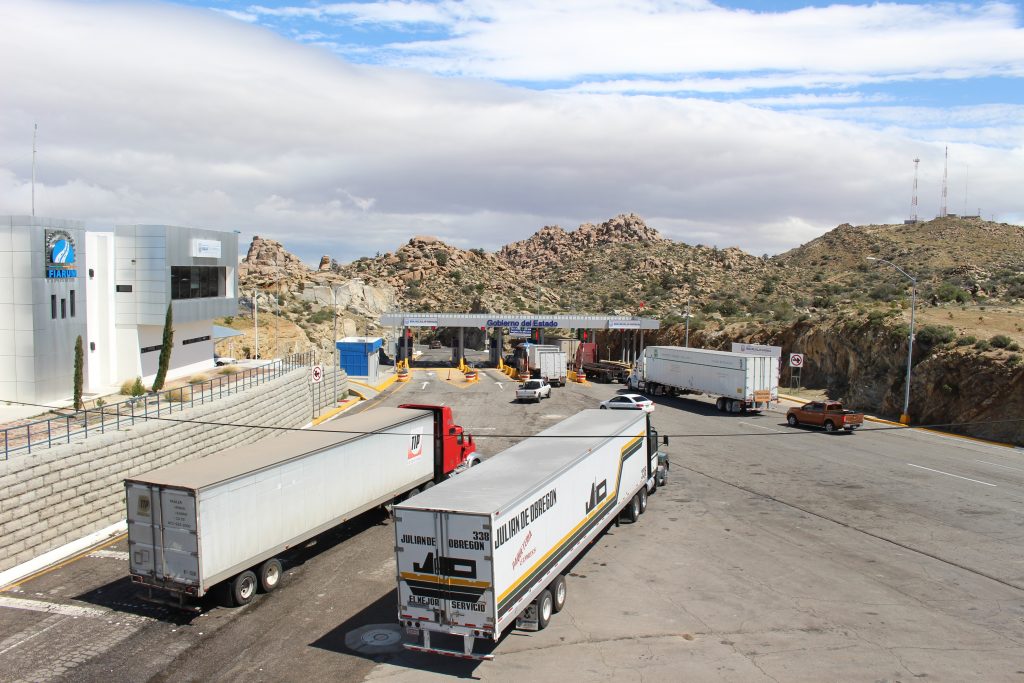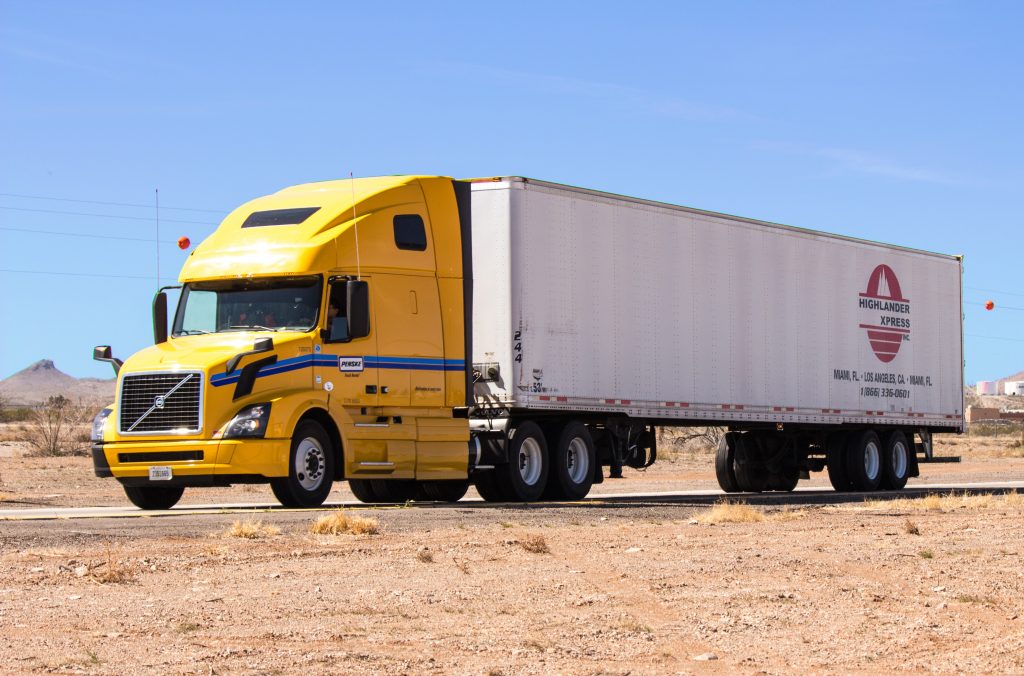One of the main challenges of truck weighing is keeping track of and properly utilizing scale data. There are numerous reasons to keep track of all the data stored by scales used in weighing on a daily basis, such as for use in invoicing, for monitoring trends over time, and for general convenience, but traditionally, there has not been an efficient, convenient method by which to track scale data.
Traditional methods of tracking data are slow, cumbersome, and inexact, and yet the majority of the truck weighing industry still uses these outdated methods. Web-Interfacing technology is the efficient, convenient solution that the truck weighing industry has traditionally lacked.
Web-interfacing technology is a method of connecting a truck scale or piece of weighing equipment to a computer or tablet via an ethernet connection, be it a local area network (LAN) or wide area network (WAN). Simply put, a web-interfaced weighing instrument can be connected to another connected device on its network, and then accessed via a web-based interface.
Overall Convenience
Web-interfacing technology in truck weighing applications offers numerous benefits, including overall convenience and efficiency. This technology is convenient because it allows for more or less instant access to full archives of scale data. Stored transaction data and other important information such as customer files and product files to be accessed and edited remotely. The ability to complete these tasks without leaving one’s desk is undoubtedly more convenient than the traditional manual methods of completing the same tasks.
 Many organizations still handle their data manually, using methods such as printing out desired data from the scale itself in the form of paper reports or tickets, and then having to keep track of those tickets or printed pages in order to maintain a usable archive of information. This usable archive of tickets and print-outs will still be quite difficult to navigate, and inevitably, tickets are lost and the archive’s usefulness diminishes over time.
Many organizations still handle their data manually, using methods such as printing out desired data from the scale itself in the form of paper reports or tickets, and then having to keep track of those tickets or printed pages in order to maintain a usable archive of information. This usable archive of tickets and print-outs will still be quite difficult to navigate, and inevitably, tickets are lost and the archive’s usefulness diminishes over time.
Archiving data in this way is antiquated and there is no reason for any organization to do so. Real-time data tracking using traditional methods is equally labor-intensive and ineffective. For example, using traditional scale technology and data tracking methods, to find information as simple as the number of transactions made on a given scale for a given month would require halting the scale’s use and then taking down the information manually, such as by going through printed tickets or transaction reports, not to mention having to leave one’s workspace and intrude into the scale house workspace. With web-interfacing technology, the desired information could be accessed near instantly from any computer or device on the network.
Rather than having to leave one’s desk and walk to wherever the scale with the desired data is located, and then using some form of the old methods described above to retrieve the desired information, one could, using web-interfacing technology, simply open up the web interface for the desired scale and retrieve the information in seconds.
Even using a more modern method than tracking printed tickets, such as a PC serially connected to a weighing instrument, while slightly faster and more advanced than paper methods, is still wholly inferior to a web-interfaced system. A serial connection requires the connected computer to be within 50-1000 ft (depending on the protocol being used) of the weighing instrument.
Web-interfacing technology, however, can be accessed remotely by any computer on the network, so it isn’t nearly as limited in terms of access to weighing instruments. In addition, data transfer via a serial connection is slower than an ethernet connection, and, of course, the serial connection limits data access to the single device that is physically connected at the time. Regardless of the traditional method it is compared to, the time and energy savings possible using web-interfacing technology are large, tangible, and essential.
 Increased Efficiency
Increased Efficiency
In addition to and as a result of offering the kind of convenience described above, web-interfacing technology in weighing also makes the operation of a weighing business more efficient. Rather than keeping track of and navigating physical files of scale data, as many organizations using traditional methods do, web-interfaced scale data is digitally stored as a CSV file, which can be saved, edited, and disseminated much faster and more easily than a printed ticket or piece of paper.
Additionally, CSV files are easily imported into a variety of spreadsheet programs and applications, which allows for the data to be easily manipulated and configured in any number of desired ways, such as looking at metrics like high volume customers for the prior month, data regarding particular products, or total transactions for any set period of time.
One example of how web-interfacing technology makes businesses more efficient overall is invoicing. Invoicing under a web-interfaced system is more efficient than it would be using standard methods because important data used to set prices for services can be accessed in real-time as those services are being performed, i.e. the total weight of a delivery might determine the price. Rather than having to take down the weight manually after the delivery has been completed, that information is instantly accessible as soon as the truck drives off the scale.
This increased efficiency in invoicing could carry over into other areas of the business. For example, imagine a rock quarry delivering stone to a job. These kinds of jobs are often paid by the ton. Using web-interfacing technology, the quarry can easily track the process on the job based on the percentage of the total weight ordered that has been delivered to the customer at any given point in time.
Each time a truck is weighed and departs with a load for the customer, that information would be instantly accessible to managers at the quarry, who can then use that information immediately to inform how they prioritize all jobs at hand and how they can best allocate resources to them. For instance, if the stone delivery job is behind, managers would know this in real-time, and could send more trucks or come up with other solutions to complete the job on time.
Maintenance is also more efficient under a web-interfacing scale system. For example, Fairbanks Scales’ system can be maintained through the web-interface. Fairbanks technicians can log-in to the network on-site using their device and perform diagnostic checks, troubleshooting procedures, or even calibration processes on any connected scale or piece of weighing equipment. Being able to perform these tasks via the web interface makes the tasks much easier and faster to perform, so fixing or recalibrating a troublesome scale is no longer a significant endeavor.
 Easy to Implement, Yet Underutilized
Easy to Implement, Yet Underutilized
Despite the advantages of web-interfacing technology, very few in the truck weighing industry utilize the technology. There are no real barriers to entry for using such technology. Most businesses already operate on a local area network or wide area network, and if not, setting up a stand-alone, private network between a device and a scale is easy and inexpensive.
Fairbanks Scales, a leader in scaling technology, provides web-interfacing technology as a standard part of all of their truck weighing instruments. The exact specifications of their scales vary from application to application and model to model, but the effect that web-interfacing technology has on the ease of access to those scales’ data is universal. The convenience of manipulating, analyzing, and storing data using web-interfacing technology is undeniably substantial.
In short, web-interfacing technology is essential to running an efficient truck-weighing business, offering remote and instant access to all scale-related data that could be needed in any situation. Such technology greatly increases the convenience and speed with which numerous tasks involving stored scale information can be performed, and as such, its importance should not be overlooked.
About Fairbanks Scales
For more than 180 years, Fairbanks has provided top quality industrial weighing equipment and dependable service through a network of Fairbanks sales and service representatives and authorized distributors. Fairbanks continues to break new ground in scale design, setting the new standard in weighing equipment and systems engineering while meeting the special needs of our customers.



















